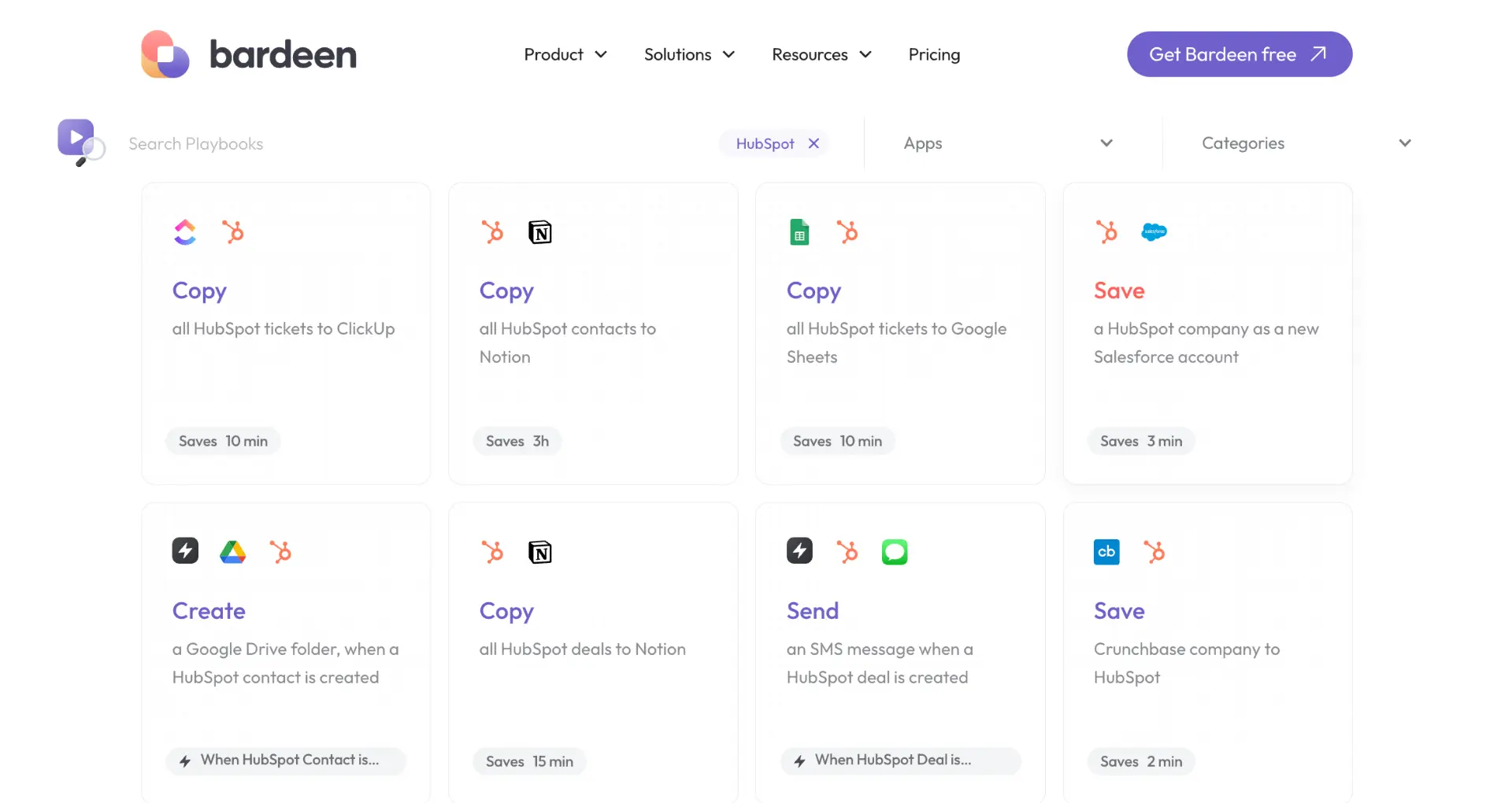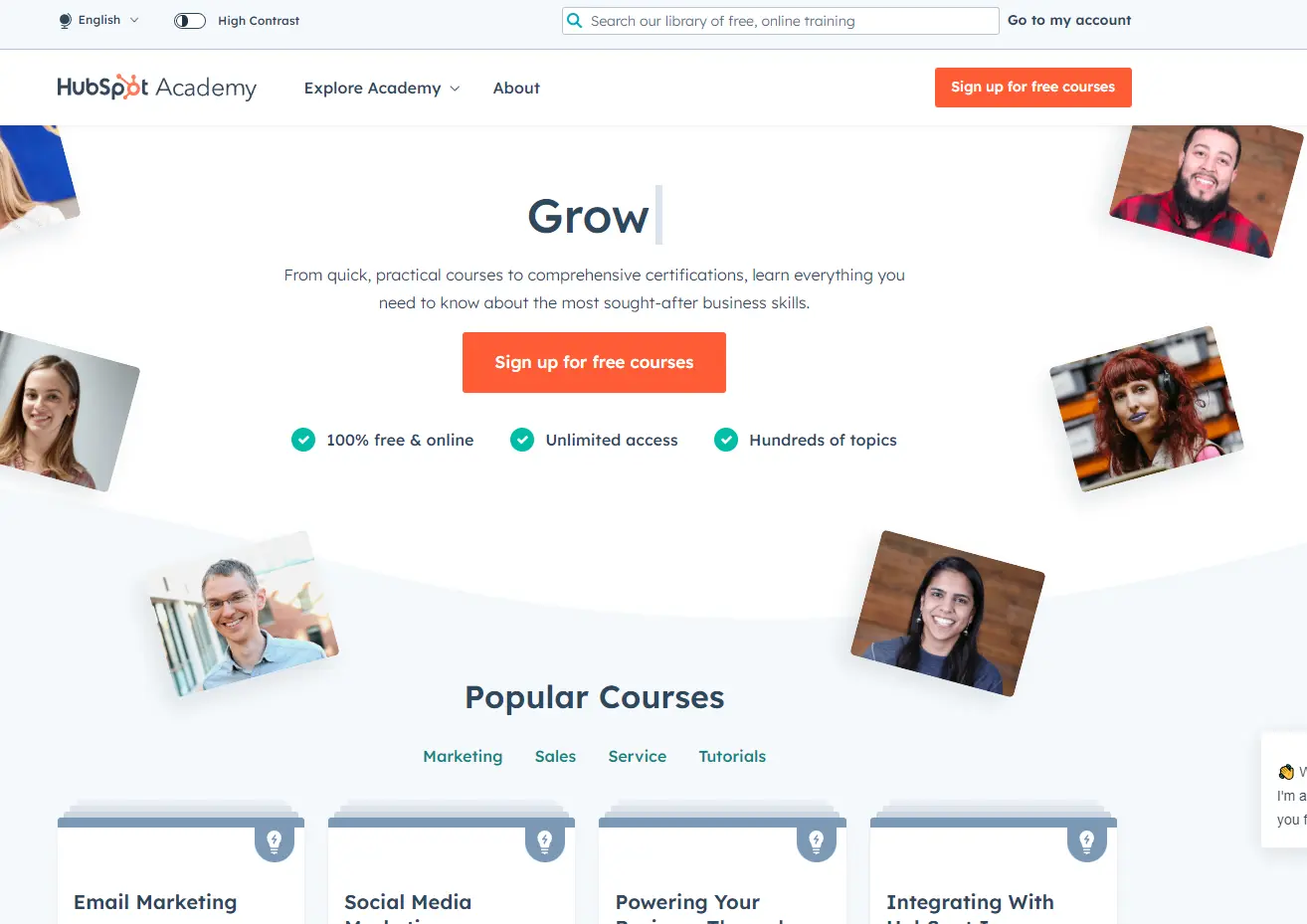Managing customer data in a CRM can be overwhelming, but HubSpot's filtering tools make it easy to find the records you need. In this step-by-step guide, we'll show you how to use HubSpot's filtering features to streamline your data and gain valuable insights. Whether you're new to HubSpot or looking to improve your skills, this guide will help you master the art of filtering records in HubSpot CRM.
Navigating to HubSpot CRM Filtering Tools
To access the filtering options in HubSpot CRM, start by logging into your HubSpot account and navigating to the "Contacts," "Companies," or "Deals" section, depending on the type of records you want to filter.
Once you're in the desired section, you'll see a search bar at the top of the page. This is where you can enter keywords to quickly find specific records. To the right of the search bar, you'll find the "Filter" button, which opens up the filtering options.
Clicking on the "Filter" button will display a dropdown menu with various filtering criteria, such as:
- Contact properties (e.g., email, company name, job title)
- Company properties (e.g., industry, number of employees, annual revenue)
- Deal properties (e.g., deal stage, amount, close date)
You can also create custom filters by clicking on the "Create filter" option at the bottom of the dropdown menu. This allows you to combine multiple criteria to build more complex filters tailored to your specific needs. For more tips, check out our guide on sales prospecting tools.
Setting Up Basic Filters for Streamlined Searching
To set up basic filters in HubSpot CRM, start by navigating to the object you want to filter, such as contacts, companies, or deals. Once on the object's home page, click the "Filter" button to open the filtering options.
For example, to filter contacts by email domain:
- Click on the "Email" property in the filter dropdown
- Select "Contains" as the operator
- Enter the email domain you want to filter by (e.g., "@company.com")
- Click "Apply filter" to see the filtered results
Similarly, you can filter companies by their name or industry, or filter deals by their stage or amount. Other commonly used standard fields for basic filtering include:
- Contact properties: Job title, Lead status, Country
- Company properties: Number of employees, Annual revenue, Industry
- Deal properties: Deal type, Amount, Close date
Using these basic filters in your daily CRM management tasks can help you quickly find the records you need, saving time and increasing productivity. For instance:
- Sales reps can filter deals by stage to prioritize their pipeline
- Marketing teams can filter contacts by lead status to identify qualified leads
- Customer service can filter companies by industry to tailor their support approach
By leveraging basic filters, you can streamline your searching process and focus on the most relevant records for your specific tasks and goals.
Save time and scrape data from website without any coding skills. Let Bardeen handle the repetitive parts.
Automate sales prospecting to make this even more efficient.
Utilizing Advanced Filtering Features
HubSpot CRM offers advanced filtering features that allow you to create complex filters using custom properties and AND/OR logic. These features enable you to tailor your searches to specific business requirements, making it easier to find the exact records you need.
To create advanced filters:
- Click on the "Filter" button on the object's home page
- Select "Create custom filter"
- Choose the properties you want to filter by, such as custom properties you've created
- Set the criteria for each property using operators like "contains," "is equal to," or "is between"
- Combine multiple criteria using AND/OR logic to refine your search
For example, you might create a filter for contacts that:
- Have a custom property "Industry" equal to "Technology"AND
- Have a "Last Activity Date" within the past 30 daysOR
- Have a "Lead Score" greater than 50
This filter would show you all contacts in the technology industry who have either been active recently or have a high lead score, allowing you to focus on the most promising leads.
Other examples of advanced filters include:
- Finding deals that have a certain product associated with them and are scheduled to close within the next quarter
- Identifying companies in a specific geographic region with over 100 employees
- Locating contacts who have submitted a particular form on your website and have a certain job title
By leveraging HubSpot's advanced filtering features, you can create highly targeted segments of your CRM data, enabling you to take more precise actions and make data-driven decisions to grow your business. To further improve your sales efforts, consider learning about automate sales prospecting.
Saving and Managing Custom Filters
After creating custom filters in HubSpot CRM, you can save them for future use, making it easy to access frequently used filter combinations. Here's how to save and manage your custom filters:
- After setting up your desired filters, click the "Save" button in the top right corner of the screen
- Give your custom filter a descriptive name that reflects its purpose
- Choose whether to make the filter private (visible only to you) or shared with your team
- Click "Save" to store the custom filter
To access your saved filters:
- Navigate to the object's home page (e.g., Contacts, Companies, Deals)
- Click the "Saved Filters" dropdown menu
- Select the desired filter from the list to apply it to your current view
Managing your saved filters is crucial for maintaining an organized and efficient CRM. To keep your saved filters list clutter-free:
- Regularly review your saved filters and delete those no longer needed
- Update filter names to ensure they accurately describe their function
- Adjust sharing settings as necessary to control access for team members
By saving and managing your custom filters effectively, you can automate sales prospecting and quickly access the specific data segments you need for your daily tasks.
Make managing your CRM even easier. Use Bardeen to connect Google Sheets and automate manual processes in one click.
Leveraging Filters for Enhanced Sales Insights
Filtering your CRM data is a powerful way to gain deeper insights into your sales performance and customer engagement. By using filters strategically, you can uncover valuable information that can help you optimize your sales processes and drive better results.
Here are some ways to leverage filters for enhanced sales insights:
- Analyze sales funnel performance by filtering deals based on their stage, allowing you to identify bottlenecks and opportunities for improvement
- Assess the effectiveness of your lead generation efforts by filtering contacts based on their source and analyzing their progression through the sales funnel
- Evaluate the performance of individual sales reps by filtering deals and activities by owner, helping you identify top performers and areas for coaching
- Gain insights into customer behavior by filtering contacts based on their engagement level, such as email opens, clicks, and form submissions
In addition to these examples, you can use filters to track and analyze specific sales activities, such as:
- Calls made to prospects
- Emails sent and responded to
- Meetings scheduled and completed
- Proposals sent and won
By filtering your data based on these activities, you can gain a clearer understanding of which actions are driving the most success for your sales team, allowing you to refine your strategies and allocate resources more effectively. For more detailed techniques, check out our guide on sales intelligence.
Tips for Effective Filter Combinations
To get the most out of your HubSpot CRM, it's essential to use filter combinations strategically. By combining different filter criteria, you can create highly targeted segments that allow you to focus on specific subsets of your data. Here are some tips for creating effective filter combinations:
- Combine demographic and behavioral criteria, such as job title and email opens, to identify highly engaged prospects within a specific role
- Use a combination of company size, industry, and deal stage to prioritize your sales efforts and tailor your approach to each segment
- Combine date-based filters with other criteria, such as last activity date and lifecycle stage, to identify dormant leads or customers who may require re-engagement
- Use a mix of positive and negative criteria, such as "contains" and "does not contain," to create highly specific segments and exclude irrelevant records
Successful businesses often use the following filter combinations to gain valuable insights and drive better results:
- High-value customers: Combine total revenue, purchase frequency, and customer lifetime value filters to identify and prioritize your most valuable customers
- At-risk customers: Use a combination of last purchase date, support ticket volume, and engagement level filters to identify customers who may be at risk of churning
- Upsell opportunities: Combine product purchase history, company size, and engagement level filters to identify customers who may be ready for an upsell or cross-sell opportunity
By experimenting with different filter combinations and analyzing the results, you can continually refine your segmentation strategy and uncover new opportunities to optimize your sales and marketing efforts.
Use Bardeen to automate your sales prospecting and save time. Focus on closing deals while Bardeen handles repetitive tasks.
Troubleshooting Common Issues with HubSpot Filters
While HubSpot's filtering system is generally reliable, users may occasionally encounter issues when setting up or using filters. Here are some common challenges and solutions to help you overcome them:
- Incomplete or inconsistent data: Ensure that all records have complete and consistent data in the fields you want to filter. Inconsistencies, such as extra spaces or variations in spelling, can prevent records from appearing in filtered results.
- Case sensitivity: HubSpot filters are case-sensitive. If you're not seeing expected results, double-check that the case matches exactly between your filter criteria and the record data.
- Incorrect filter logic: When combining multiple filters, ensure that you're using the appropriate AND/OR logic. Incorrect logic can lead to unintended results or no results at all.
- Delayed updates: In some cases, recent changes to record data may not immediately reflect in filtered views. Allow some time for HubSpot to update its search index, and try refreshing your view.
If you continue to face issues after addressing these common problems, consider the following best practices:
- Regularly audit and clean your data to maintain consistency and accuracy
- Use standardized picklists or drop-down menus for fields that you frequently filter to minimize variations in data entry
- Test your filters with small subsets of data before applying them to larger datasets
- Reach out to HubSpot support or consult the HubSpot Community for further assistance with persistent or complex filtering issues
By understanding common challenges and adopting best practices, you can effectively troubleshoot and resolve issues with HubSpot filters, ensuring that your data remains well-organized and accessible. For more complex tasks, consider using sales prospecting automation tools to streamline your process.






